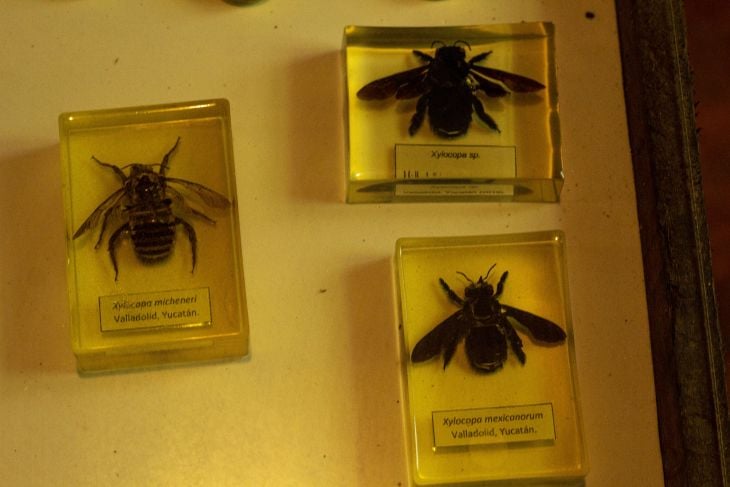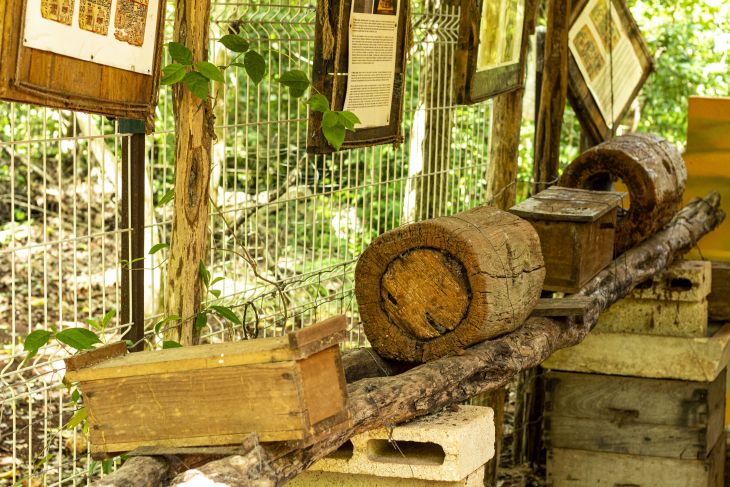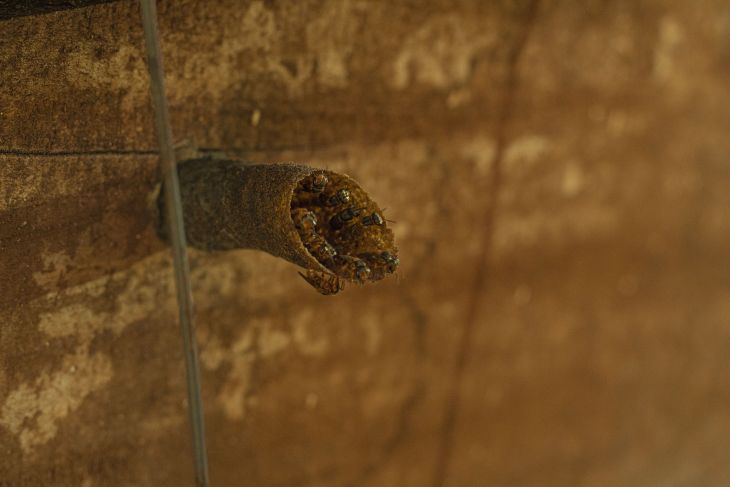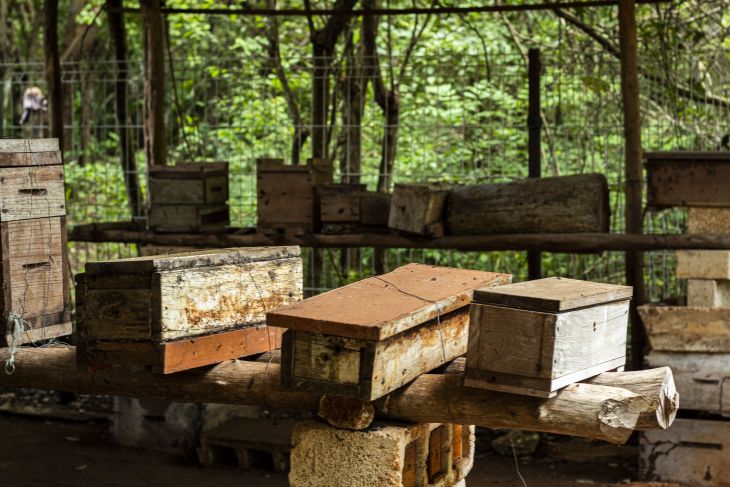Merida, Yucatan, (November 08, 2021).- “Our goal here in Xkopek is to be able to preserve them, take care of them, raise awareness and educate more people so that we stop killing them. Thanks to the bees we have seeds, fruits, trees, plants, and therefore oxygen that, without them, we would not have any of this and we ourselves are ending that by killing the bees ”, explain park managers.
Xkopek is located on Calle 57 with 38 ex aviación San Juan, next to the taxi drivers union “Los Frailes”. 97780 Valladolid, Mexico
The Xkopek beekeeping park has been open to the public for five years, but for more than 25 years it has been dedicated to the preservation of Melipona bees, native to Yucatan; “Xkop”, from the Maya language, means dry cenote, the stage in which the park’s cenote is located (where the beehives are) and “Ek” is a hive of wasps; Currently, to raise awareness about the importance of bees, they offer tours to see the hives of the native species.

Dianela, in charge of doing the tours, explained that Melipon bees have many subfamilies and not all of them look like the yellow and black bicolor that usually comes to mind immediately when thinking of bees.

In the case of Meliponas, they do not have a stinger, so they do not bite, but that does not mean that they cannot defend themselves from possible dangers; There are 46 types of this bee in Mexico and 16 in Yucatan, in the park they have five subfamilies.

“Its main threat today is the human being who is killing, destroying, and burning many hives and as a result of that we are losing many bees, not only in Yucatan but throughout the world.”
One of those is the Xnuk bee, Chooch, which creates its hives under the ground, unlike the common ones, “local people often mistake it for flies” and regretted that for that fact they are killed and that is one of their greatest threats today.

In order to find the hive with all the bees, he estimated that it has to be dug five meters down, “that is the reason why in Xkopek we do not harvest honey from this bee because of the total destruction of the hive is necessary”.
Also on the site is the Lemon Kaab bee, which finds its name in the smell it gives off to get honey and pollen from other bees since they do not produce it themselves but steal it to survive. “When they go to steal what they do is reach the hive of another bee and expel a chemical substance from their body that smells a lot of lemons and is a kind of drug that makes the other bees dizzy while they are taking out and stealing everything”.

The Sakxik subfamily collects the resin from the trees and takes it to their hives creating propolis to cover holes in their hive, located inside a hollow trunk, in addition to helping them avoid diseases among themselves, therefore, their production is higher in propolis than honey.
The second native bee with the highest honey production is commonly known as the “bush bee”, it produces 300 to 400 ml of honey per year per hive, compared to the 25 to 30 liters of honey per year per hive produced by the European one; their defense is to go towards the hair and give off a smell that attracts their companions, who come to contribute and bite those who put them at risk.

The fifth subfamily of the place is the solitary bee, which lives, as its name indicates, alone in its hive, this bee does not produce honey except for its own consumption.
TYT Newsroom


